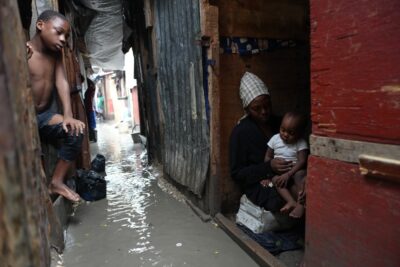Ottawa cutting foreign aid and research spending back to pre-pandemic level
By Canadian Press on November 4, 2025.

OTTAWA — The Carney government says it is cutting foreign aid spending to a level in line with Canada’s pre-pandemic aid allocations — without specifying the size of this year’s aid budget.
Tuesday’s budget forecasts $2.7 billion in cuts over four years, which will affect things like global health projects. Ottawa is also withdrawing some support for a world-renowned aid research centre.
“There will be reductions in development funding to global health programming, where Canada’s contribution has grown disproportionately relative to other similar economies,” the budget document says.
It’s not clear where the aid cuts will land. The budget talks of “leveraging innovative tools, while focusing support for countries that need it the most” and rejigging existing agreements with specific countries.
The budget also says that Canada will cut funding “to some international financial institutions” while finding ways that “Canada’s contributions can be leveraged further.”
Canada spent $6 billion on aid in the last reported fiscal year ending in March 2024, along with $2.6 billion for international financial assistance such as loans for Ukraine. Total spending on all aid-related files — including support for refugees in Canada and development grants — came to $12.3 billion in the last reported fiscal year.
Ottawa increased its development and humanitarian spending during the pandemic, in part to restore stalled progress on fighting major illnesses such as AIDS and tuberculosis as governments turned their attention to COVID-19.
Developing countries are still grappling with a debt crisis driven by high interest rates that spiked as wealthier governments spent big during the pandemic. They’re also facing an increase in the number and intensity of natural disasters due to climate change.
Under the banner of “trade finance,” the government is repurposing $138 million in current funding for Global Affairs Canada — primarily from an allocation Ottawa taps to make funding announcements at global summits — to rebuild Ukraine’s critical infrastructure.
The government says Ukraine’s reconstruction could boost Canadian industry “across nearly every sector, from engineering and energy to agri-food, health care and technology.”
The International Development Research Centre will see steadily deeper cuts, starting with $11.4 million in the fiscal year that starts in April, rising rising to $23.5 million annually at the end of five years.
Parliament has allocated $159.4 million to the IDRC for the current fiscal year.
The cuts come just days after Randeep Sarai, the secretary of state for international development, suggested the institution would have sufficient funding.
At the House of Commons foreign affairs committee on Oct. 28, Liberal MP Rob Oliphant, parliamentary secretary to Foreign Affairs Minister Anita Anand, questioned Sarai about IDRC’s funding in this budget.
Oliphant called IDRC “a preeminent, world-class institution, that is providing research so that we put our aid in the best places possible.”
He said the agency’s research leads to projects that prevent costly humanitarian crises. Sarai agreed.
“I call it our secret weapon. I think IDRC is one of Canada’s best investments,” Sarai said. He gave the example of the agency helping to create “climate-resilient potatoes in the Philippines,” which helped the rural poor feed their kids and send them to school.
“It will continue to maintain, I think, the support that is necessary. It is one of Canada’s paramount institutes,” Sarai testified.
Prime Minister Mark Carney heads to the G20 summit in Johannesburg later this month. The South African government is expected to push for aid spending and loans to address what it called this week an “inequality emergency” that is disrupting democracy and destabilizing economies.
Aid groups have said they will comment on the budget this afternoon.
This report by The Canadian Press was first published Nov. 4, 2025.
Dylan Robertson, The Canadian Press
25-24

